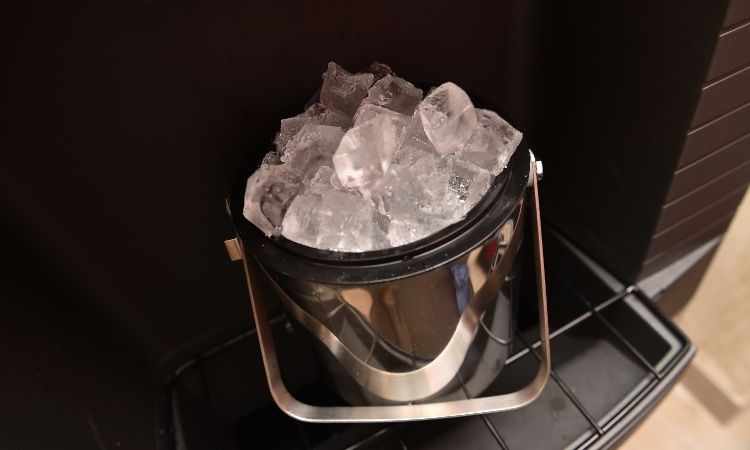
The global pursuit of well-being is no longer confined to gyms or meditation apps—it’s transforming how people travel. From yoga retreats in Bali to longevity clinics in Switzerland, wellness tourism is redefining the purpose and experience of travel.
According to recent market data, the global wellness tourism market reached approximately USD 896.73 billion in 2024. Looking ahead, the market is projected to expand at a CAGR of 7.00% between 2025 and 2034, reaching an estimated USD 1,764.00 billion by 2034. This robust growth underscores the increasing prioritization of mental, physical, and emotional health among travelers worldwide.
In this blog, we explore the drivers behind this growth, break down key market segments, and examine how wellness tourism is reshaping the global travel industry.
What is Wellness Tourism?
Wellness tourism refers to travel primarily motivated by the pursuit of enhancing or maintaining one’s personal well-being. It encompasses a wide range of activities—from spa treatments and fitness boot camps to preventive healthcare and alternative medicine retreats. Unlike medical tourism, which is centered around clinical procedures, wellness tourism is about proactive self-care, rejuvenation, and holistic health.
Market Segmentation by Travel Type
Domestic Travel
Domestic wellness travel is gaining traction, especially post-COVID, as travelers seek close-to-home experiences for stress relief and recovery. People are increasingly opting for weekend wellness getaways, spa breaks, and countryside retreats that allow them to disconnect and recharge without crossing borders. Lower travel costs and a focus on local culture and cuisine also make domestic wellness travel appealing.
International Travel
International wellness tourism often targets premium segments. Think of Ayurvedic retreats in Kerala, hot springs in Iceland, or traditional Chinese medicine clinics in China. These experiences attract global tourists willing to invest in transformative travel that combines culture, healing, and personal growth. Luxury resorts and wellness destinations have capitalized on this trend by offering all-inclusive packages that blend exotic settings with tailored wellness programs.
Market Segmentation by Activity
1. Beauty and Anti-Ageing
This segment includes services such as aesthetic dermatology, cosmetic rejuvenation, and spa therapies. Aging populations in developed countries and rising youth interest in preventive skincare are boosting demand for wellness resorts offering anti-ageing treatments and beauty-focused getaways.
2. Health and Nutrition
Travel experiences centered around detoxification, personalized nutrition plans, and clean eating are increasingly popular. Wellness resorts now employ nutritionists, chefs, and health coaches to deliver comprehensive dietary programs that cater to vegan, gluten-free, keto, and other health-focused preferences.
3. Fitness and Weight Management
Fitness-focused retreats—ranging from yoga and Pilates to high-intensity interval training (HIIT)—appeal to travelers who want to stay active while away from home. These programs often include personal coaching, adventure activities like hiking or surfing, and balanced meal plans, attracting both fitness enthusiasts and those seeking weight loss in a supportive environment.
4. Preventive and Personalized Medicine
With the rise of precision health, many wellness resorts now offer genetic testing, biohacking tools, and executive health screenings. Travelers, particularly affluent and middle-aged professionals, are investing in longevity and disease prevention while enjoying luxury accommodations and serene surroundings.
5. Complementary and Alternative Medicine (CAM)
Traditional practices such as Ayurveda, naturopathy, acupuncture, and Reiki are central to wellness tourism in regions like India, Thailand, and China. These ancient therapies are increasingly integrated into modern spa experiences, creating hybrid wellness packages that appeal to both spiritual and health-conscious travelers.
6. Others (Mindfulness, Digital Detox, Creative Wellness)
Emerging trends include mindfulness retreats, silent meditation, digital detox getaways, and creative wellness activities like art therapy or forest bathing. These options cater to urban dwellers looking to escape tech-driven lifestyles and reconnect with themselves.
Market Segmentation by Purpose
Leisure and Recreation: Casual wellness travel for relaxation, typically including spa visits, massages, and scenic retreats.
Medical and Therapeutic: Focused on healing from specific conditions or improving physical function through therapies and rehabilitation.
Spiritual and Emotional Well-being: Includes meditation centers, yoga ashrams, and spiritual journeys.
Professional/Work-based: Executive wellness programs and corporate retreats aimed at stress management and productivity enhancement.
Regional Insights
North America
North America remains a wellness tourism powerhouse, with the U.S. offering everything from desert spa resorts to advanced wellness clinics. Wellness-focused hotel chains and tech-integrated services are gaining ground.
Europe
Europe’s wellness culture is rooted in tradition, with countries like Germany, Austria, and Hungary known for their thermal spas and wellness towns. An aging population and rising disposable incomes continue to drive this market.
Asia-Pacific
Asia-Pacific is experiencing the fastest growth, with countries like India, Thailand, Indonesia, and Japan leading in alternative therapies, holistic retreats, and cultural healing practices. Cost-effective options and spiritual appeal make the region a global wellness destination.
Middle East & Africa
Luxury resorts in the UAE and eco-retreats in Africa are drawing wellness seekers. Wellness is often combined with safari tourism, desert experiences, and sustainable travel options.
Latin America
Countries like Costa Rica and Brazil offer nature-based wellness experiences such as rainforest healing retreats, surf and yoga combos, and eco-resorts.
Competitive Landscape
The market is a mix of:
Luxury wellness resorts (e.g., Six Senses, Aman Resorts)
Medical wellness destinations (e.g., SHA Wellness Clinic, Lanserhof)
Retreat platforms and aggregators (e.g., BookRetreats, Healing Holidays)
Hotel chains expanding into wellness (e.g., Marriott’s Westin Wellness program)
Key strategies include:
Personalized services using AI and wearables
Wellness-themed travel packages
Partnerships with nutrition, health, and fitness brands
Sustainable tourism initiatives and eco-certifications
Market Drivers and Challenges
Drivers
Rising lifestyle diseases (obesity, anxiety, cardiovascular issues)
Increasing awareness of mental health
Growth in disposable income and luxury spending
Post-pandemic prioritization of health and immunity
Challenges
High cost of premium wellness experiences
Lack of standardization in service quality
Cultural sensitivity and authenticity concerns
Accessibility for budget-conscious travelers
Future Outlook (2025–2034)
The next decade will see wellness tourism doubling in value, driven by the integration of technology, sustainability, and personalization. Travelers will increasingly seek experiences that go beyond relaxation—aiming for transformation, healing, and holistic renewal.
Key trends to watch:
Wellness real estate and integrated communities
Tech-enhanced wellness (AI diagnostics, virtual coaching)
Expansion of mid-tier and budget-friendly wellness offerings
Greater alignment between sustainability and wellness tourism















Write a comment ...